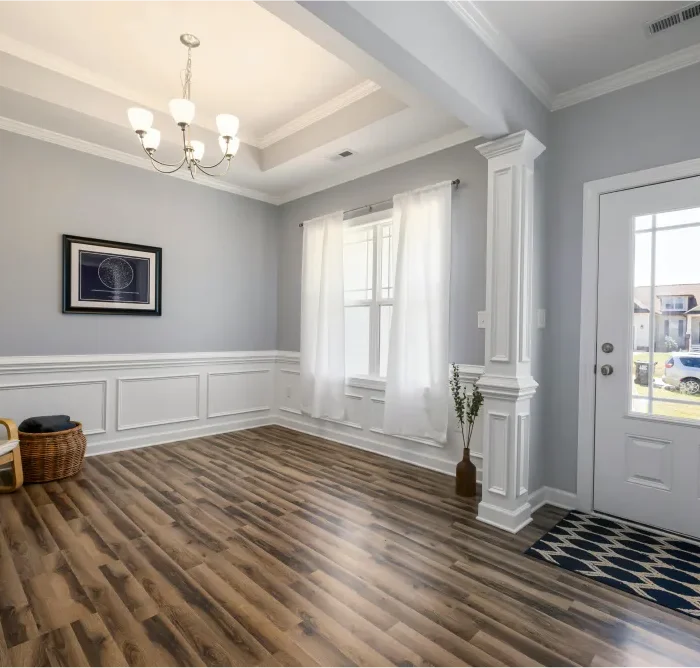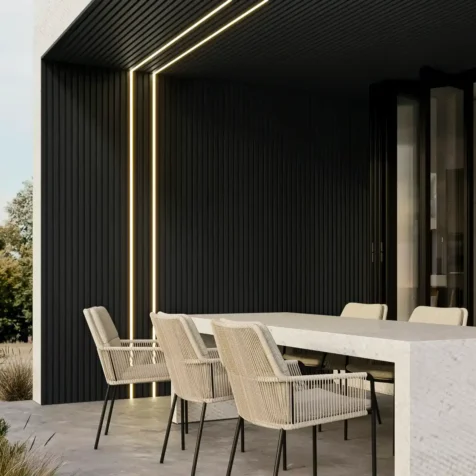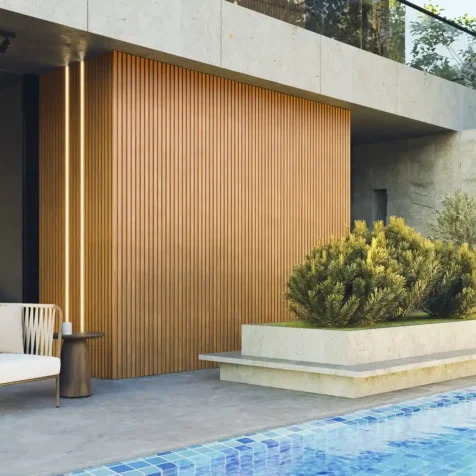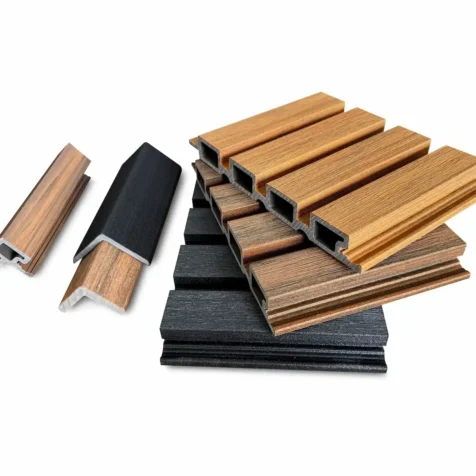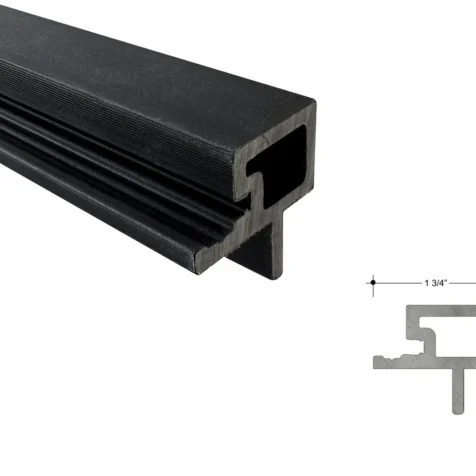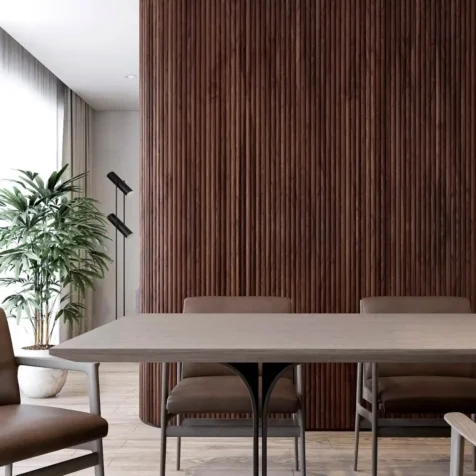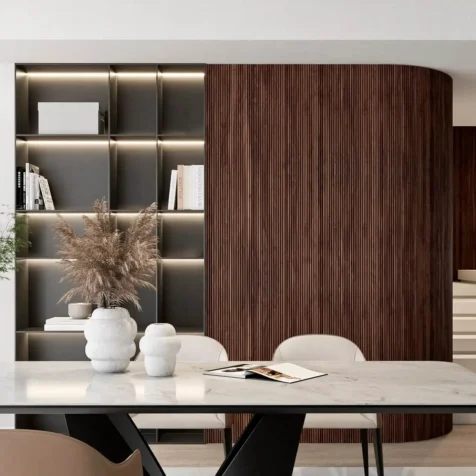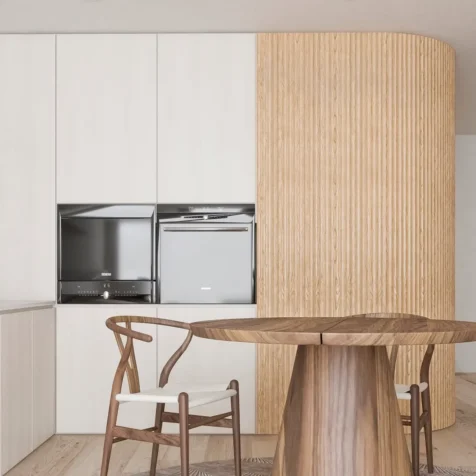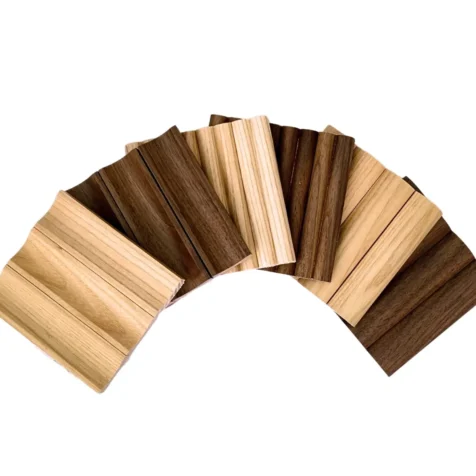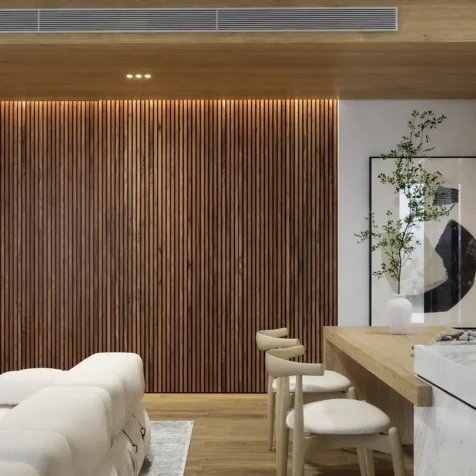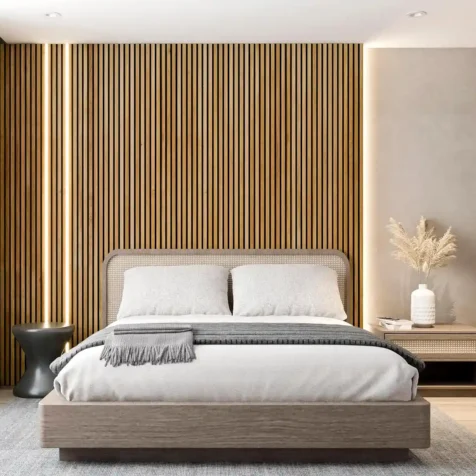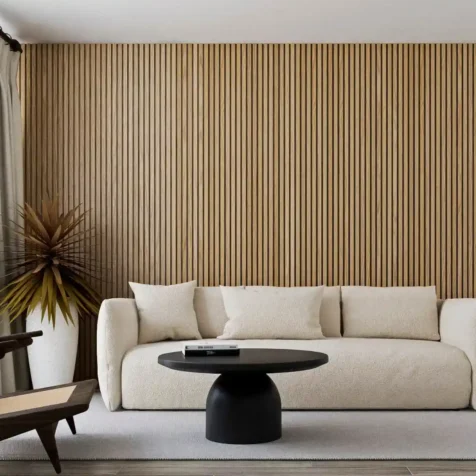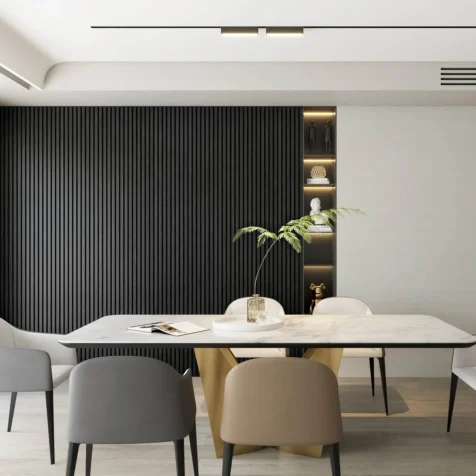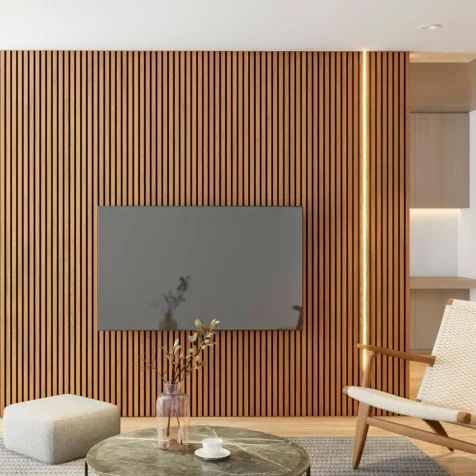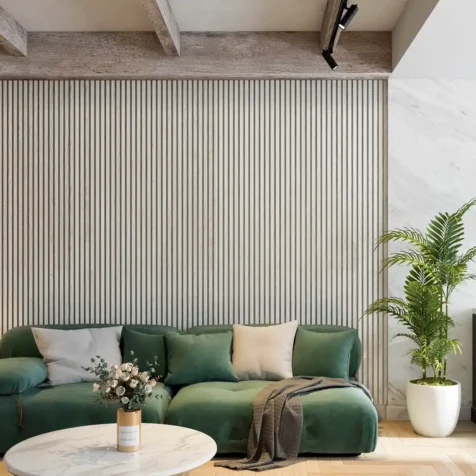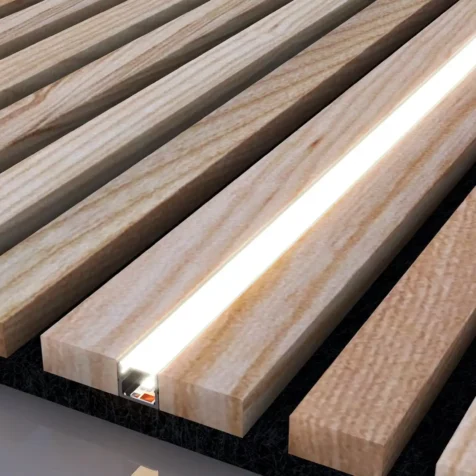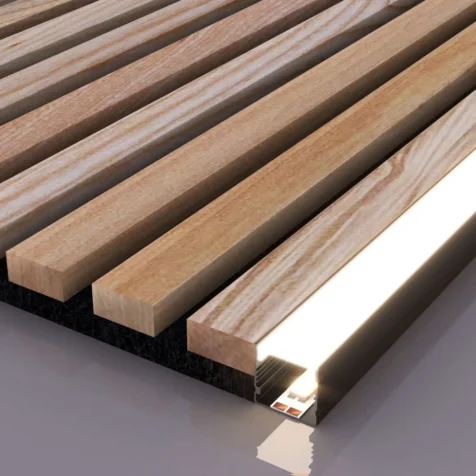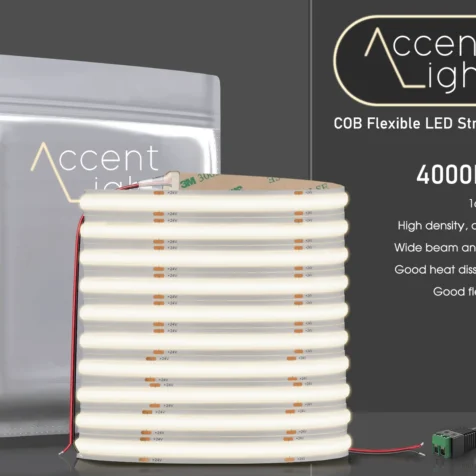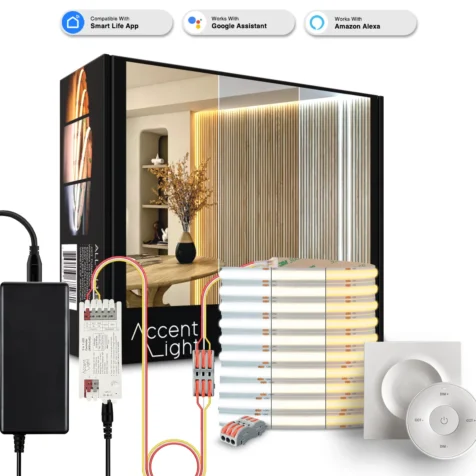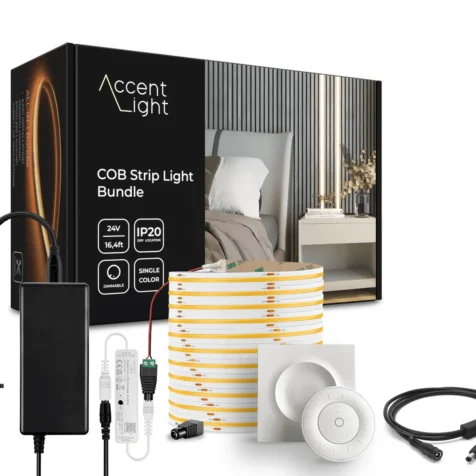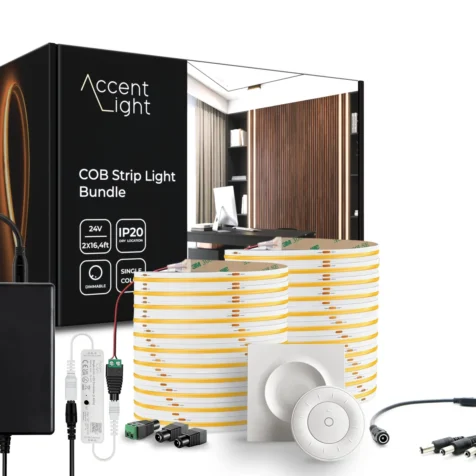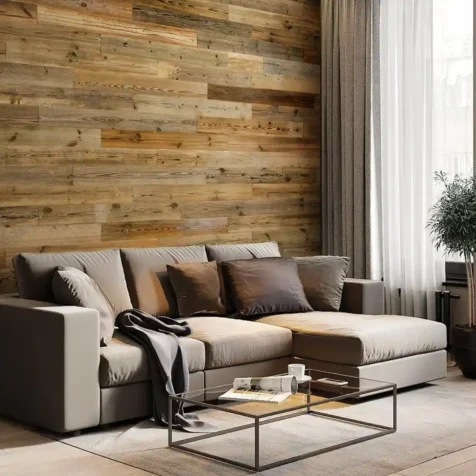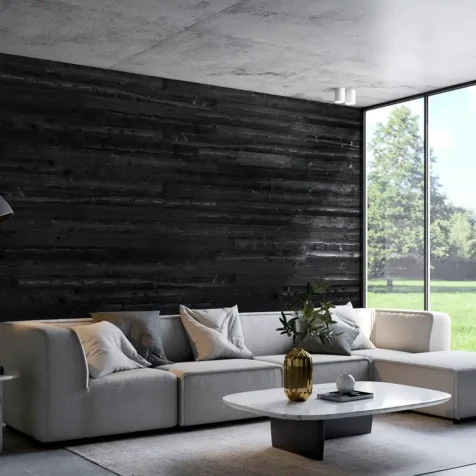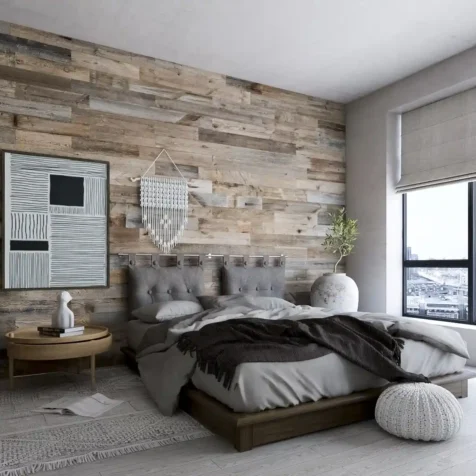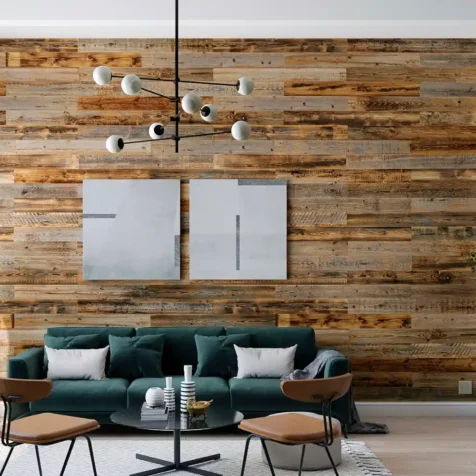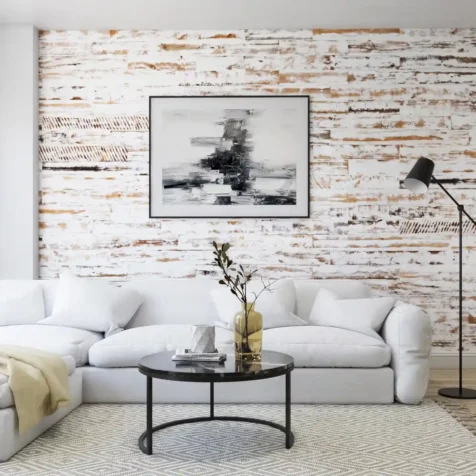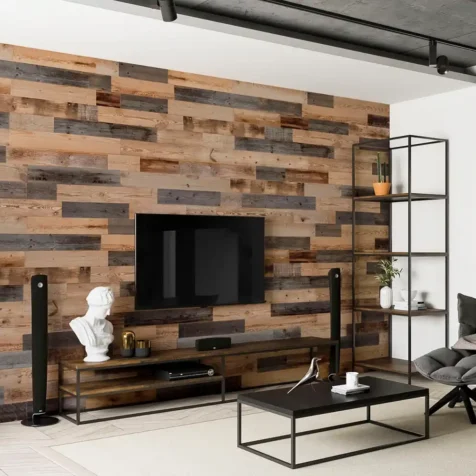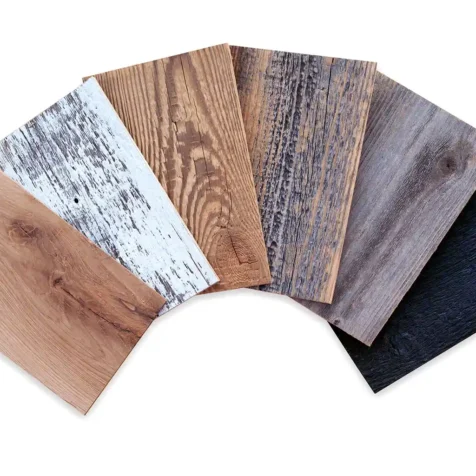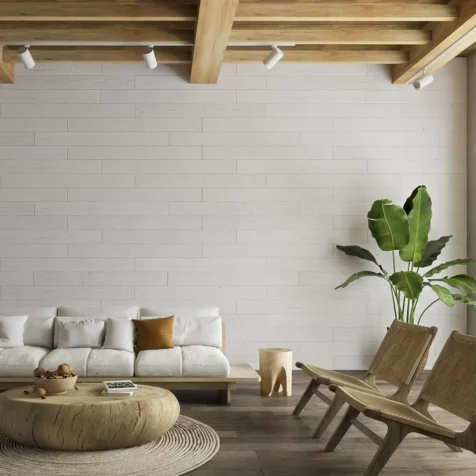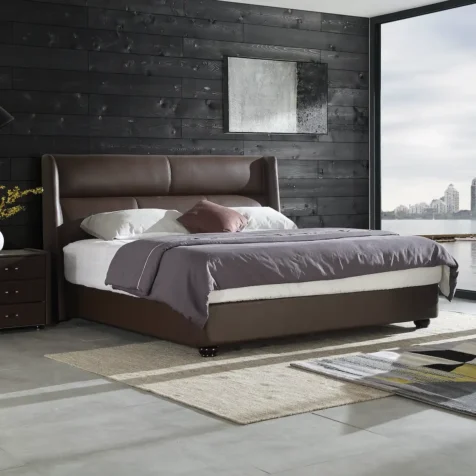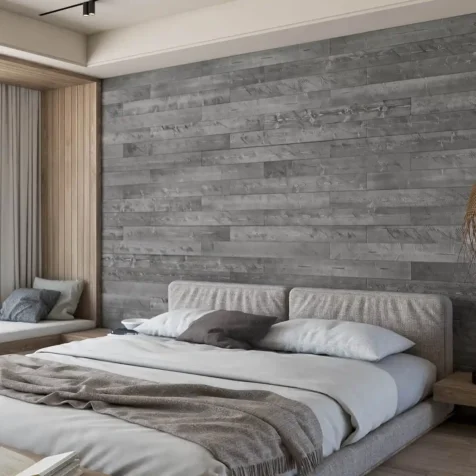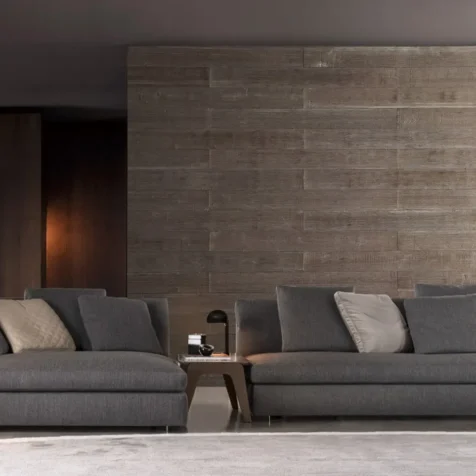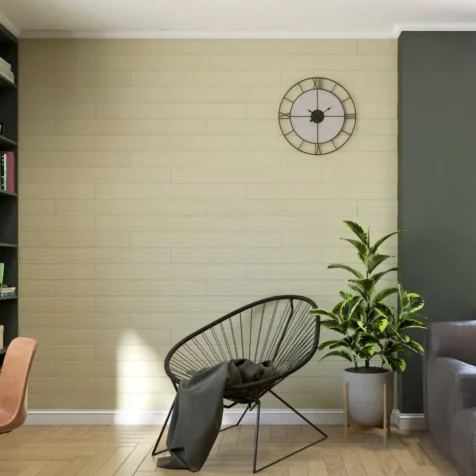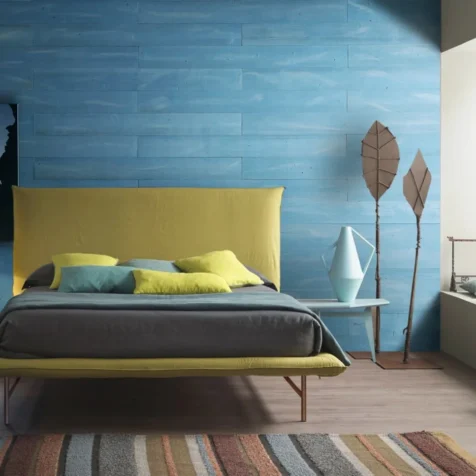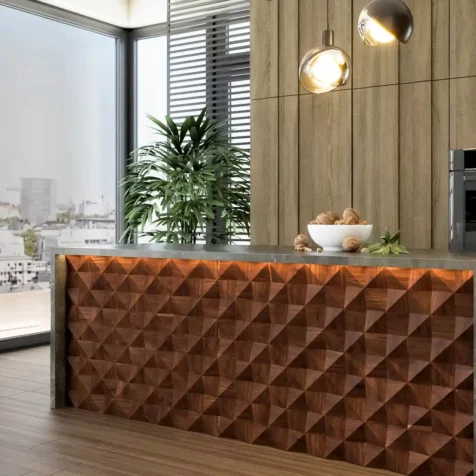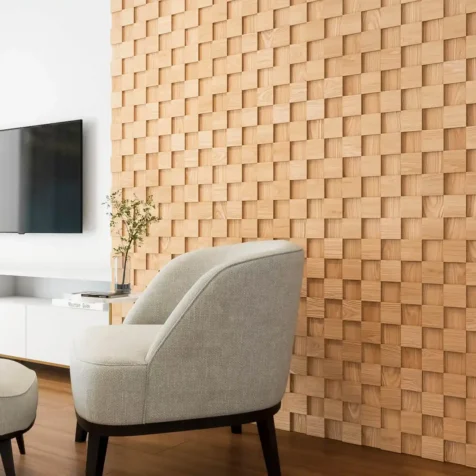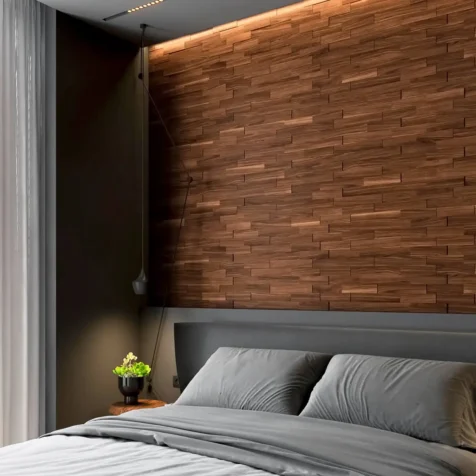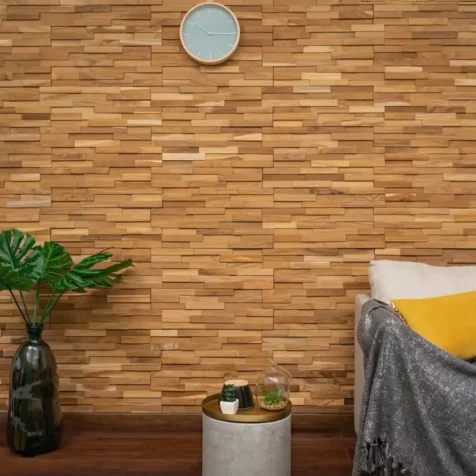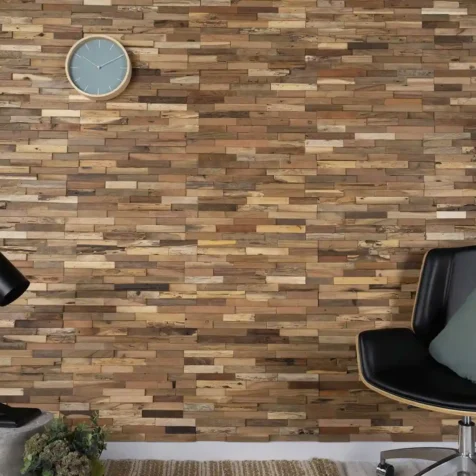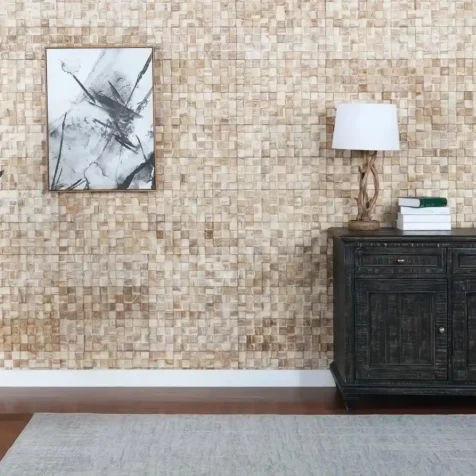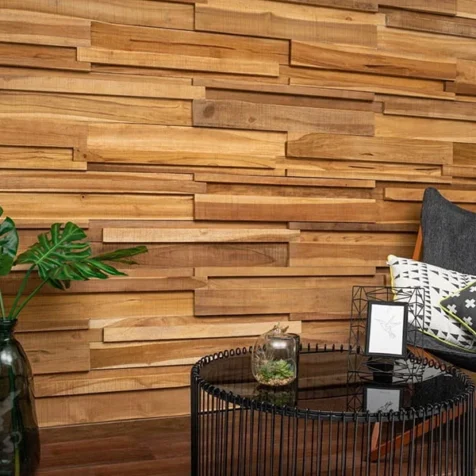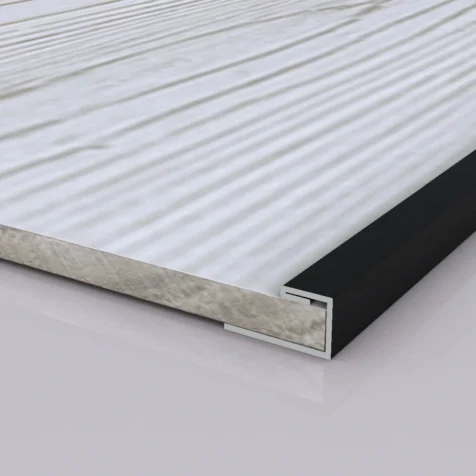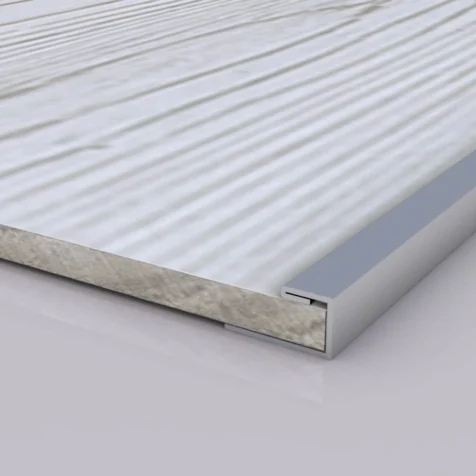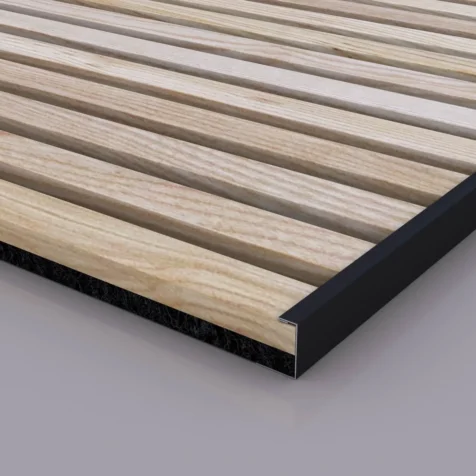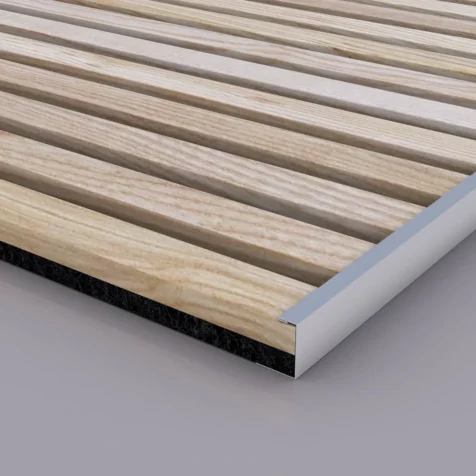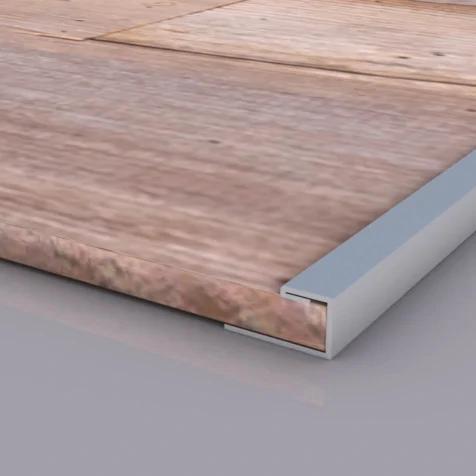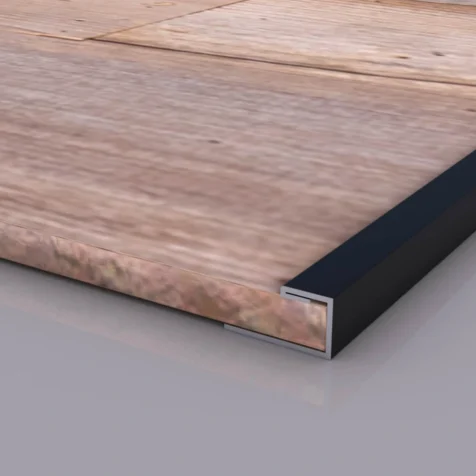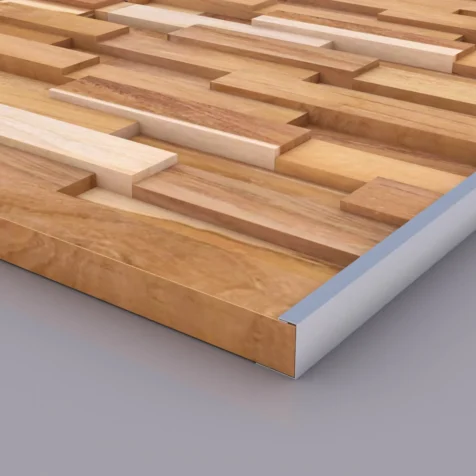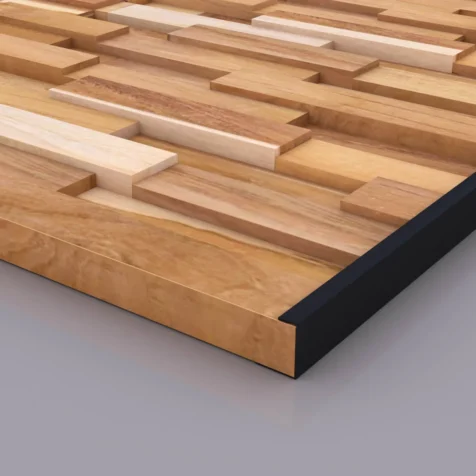What is Wainscoting? Discover Top Decorating Ideas
Wainscoting is a decorative wall covering used to cover the lowest portion of a wall to support the overall construction of the room or improve the design. Now, many people use it as a decoration for their space.
What is wainscoting? Our article will provide information on its definition, benefits, and decorating ideas that leverage wainscoting as a spotlight to improve your room’s ambience and aesthetic appeal.
What is Wainscoting?
Wainscoting is a collection of wood panels, molding, and framing that is aesthetically pleasing and practical when laid over a wall’s lower portion. Originating in the 18th century, it was initially installed for functional purposes such as protection and insulation against cold and wet stone walls.
Nowadays, people still appreciate the practical benefits of wainscoting, and they prefer to have it in their houses as an added touch of visual appearance.
Solid wood and MDF (medium-density fiberboard) are two common materials for wainscoting.
- Solid wood: Solid wood wainscoting is a strong and long-lasting option, especially for older houses and public buildings. You can paint and stain wooden wainscoting to match the existing concept.
- MDF: Medium-density fiberboard is a versatile and ideal material for many home decor projects, including wainscoting.
What are the Benefits of Installing Wainscoting?
There are 3 main benefits of wainscoting, including aesthetic appearance, wall protection, and cost efficiency.
- Provide a pleasing aesthetic:
Wainscoting is a classic decorating technique that adds sophistication and beauty to any room, especially those with irregular dimensions. It creates symmetry and anchors the architectural plan. Different types of wainscoting work well with different design styles, such as recessed, beadboard, or shiplap. Wainscoting can be used around the house or in specific areas like entryways, stairwells, or guest bathrooms, adding a hint of refinement and style to any space.
- Enhance wall protection:
In the past, plaster walls were labor-intensive to build and maintain, and wainscoting was used to shield them from dents or holes. Nowadays, drywalls are more popular due to their ease of replacement or repair, but they are still susceptible to damage from scratches, scuffs, dents, and holes, making wainscoting a useful method to prolong their lifespan.
- Be cost-efficient:
You can choose according to your budget. For example, if you want to go for wood wainscoting, the price can be inexpensive, depending on the wood type. Meanwhile, medium-density fiberboard is usually more affordable and can complement different backgrounds and bring a touch of class to your space.
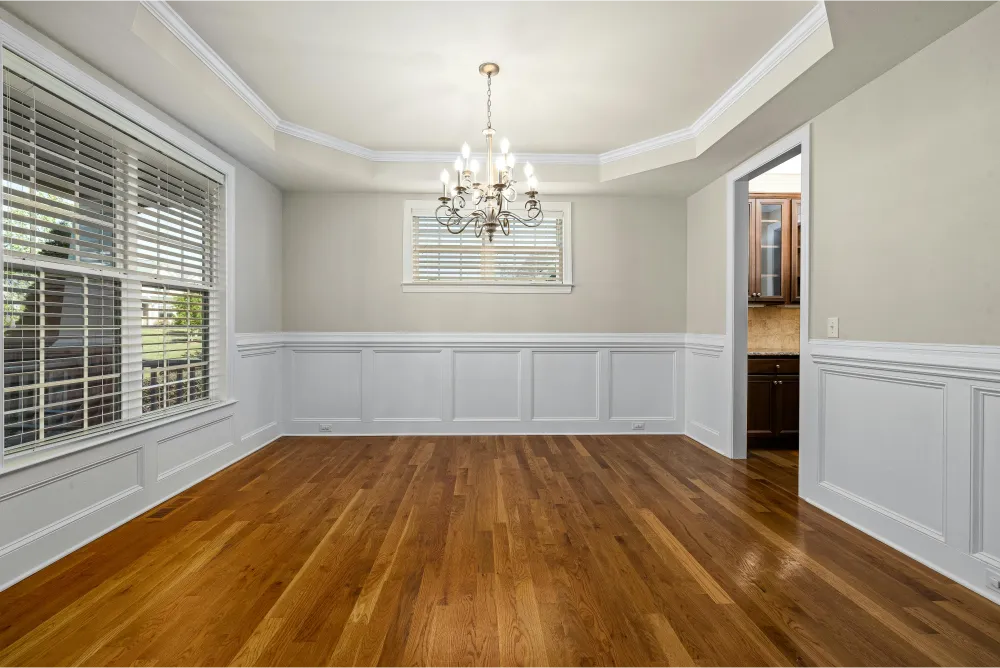
Image source: Pexels
What are The Types of Wainscoting Panels?
This wall decoration and protection come in 5 main types:
- Raised panel: This type of panel appears to be elevated in front of the rails and stiles. People use it to create aesthetic feelings and protect the wall from damage.
- Flat panel: This panel is the opposite style of the raised panel. Boards without molding or beveled edges are used in this type, creating a feeling like they are deeper than rails and stiles.
- Beadboard: The narrow, individual planks that make beadboard wainscoting are positioned right next to each other. A tongue-and-groove mechanism allows each small panel to lock with its neighbor.
- Overlay: Raised panel and flat panel wainscoting are used together to create overlay wainscoting. After installing flat panels, other panels are centered over them. Sometimes, these extra panels require molding lines.
- Board and Batten: Board and batten wainscoting is a flat panel style in which additional boards (known as battens) are used between vertical boards to cover stiles and seams.
Where Should You Use Wainscoting?
There are several places in your house where wainscoting can be a good fit:
- Entries: It’s also called a mudroom since backpacks, boots, and wet umbrellas usually stay and damage the walls. The entries can benefit from beadboard, as it is less likely to get dented. Paneled wainscoting is often suitable for more formal foyers.
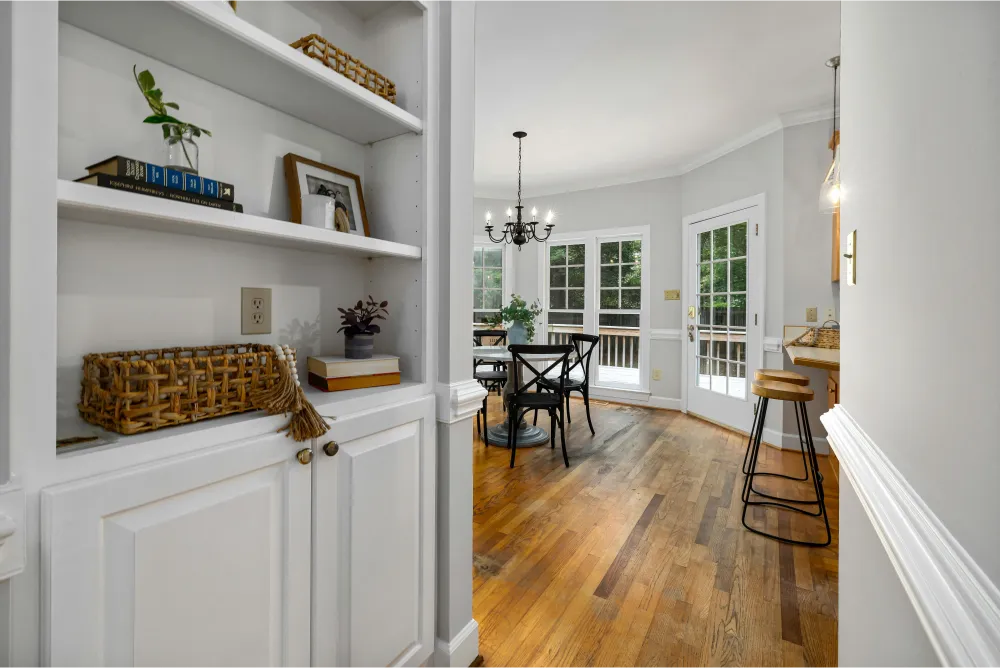
Image source: Pexels
- Stairs and hallways: Wainscoting helps protect the walls of these small passageways. The vertical stiles or beadboard remain the same, while the horizontal rails and cap match the stairs’ pitch.
- Eating areas: In casual kitchens, wainscoting topped at chair height with a noticeable top rail can protect the walls from scuffs. Meanwhile, the dining room’s tall wainscoting with a grooved plate rail highlights exquisite china and serving items.
- Family rooms and dens: Wainscoting in children’s and pet spaces may have a relaxing impact, while entertainment rooms can have broad cap rails for beverages and other playing tools.
- Baths: Wainscoting can predominate. It is a traditional alternative to expensive tiled walls. You can choose one made from a solid surface, MDF, or warp-resistant wood for your baths. It protects drywall or plaster from moisture damage and adds warmth to spaces with ceramic floors, tub enclosures, and frigid porcelain fixtures.
- Kids’ rooms: Perhaps this is the place where parents see the most benefits of wainscoting. They will appreciate its appearance and ease of cleaning after their children use it as a canvas for crayons and finger paints.
What are Some Decorating Ideas with Wainscoting?
Now you know more about “what is wainscoting” in space decoration. Here are ideas for creating an impression with it.
- Traditional and classic style: Traditional wainscoting exudes elegance with its classic raised panel pattern. The idea is perfect for formal dining rooms, living areas, and foyers. It can be tailored with various panel profiles to blend in with the overall design of your house.
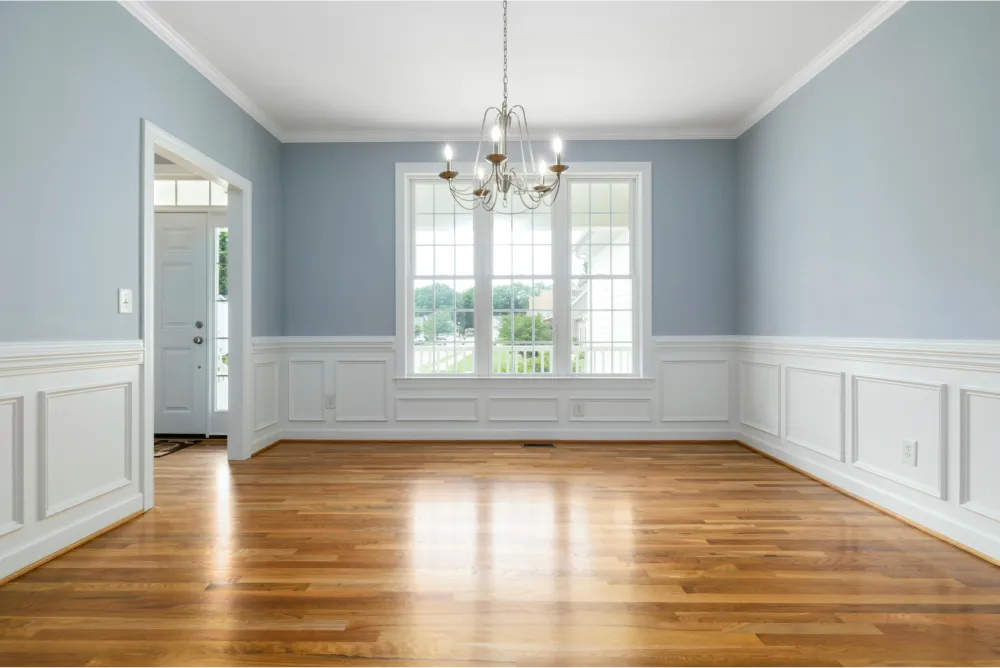
Image source: Pexels
- Picture frame: Picture frame molding adds an artistic touch to walls by creating a series of rectangular shapes. The panels can be modified to fit halls or entryways. Using opposite colors is also a good way to make more depth and distinctiveness.
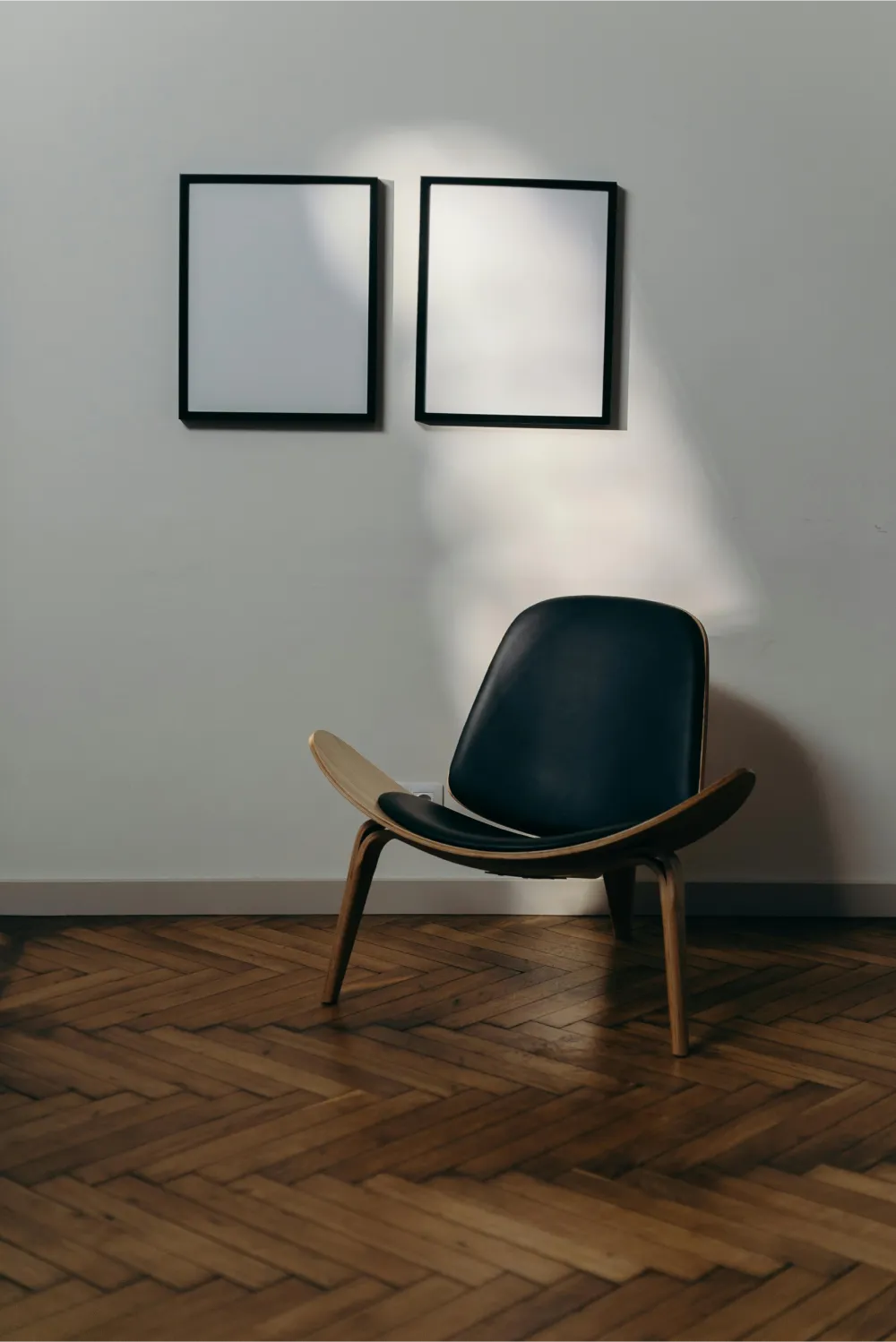
Image source: pexels
- Shiplap wainscoting: This option creates a rustic and cozy feeling. These horizontal hardwood boards look great on both classic and modern homes. It’s a great choice for accent walls or a cottage-inspired vibe.
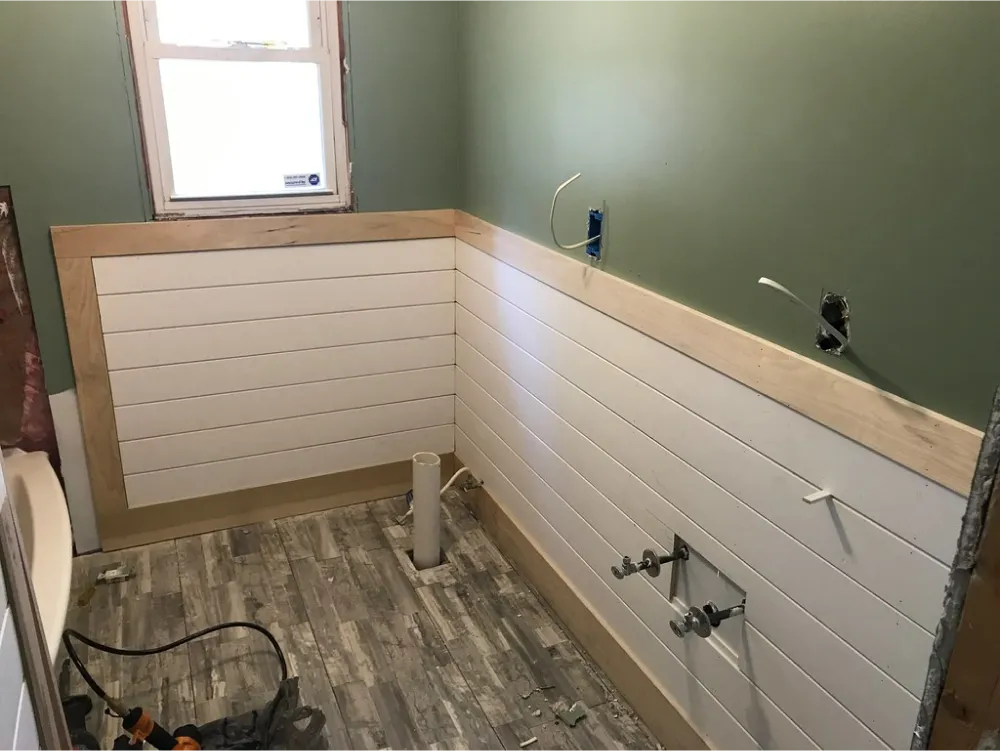
Image source: Flickr
- Contemporary look: Smooth, plain panels provide a modern, clean look. This design works well in modern homes or apartments thanks to its simplicity and versatility.
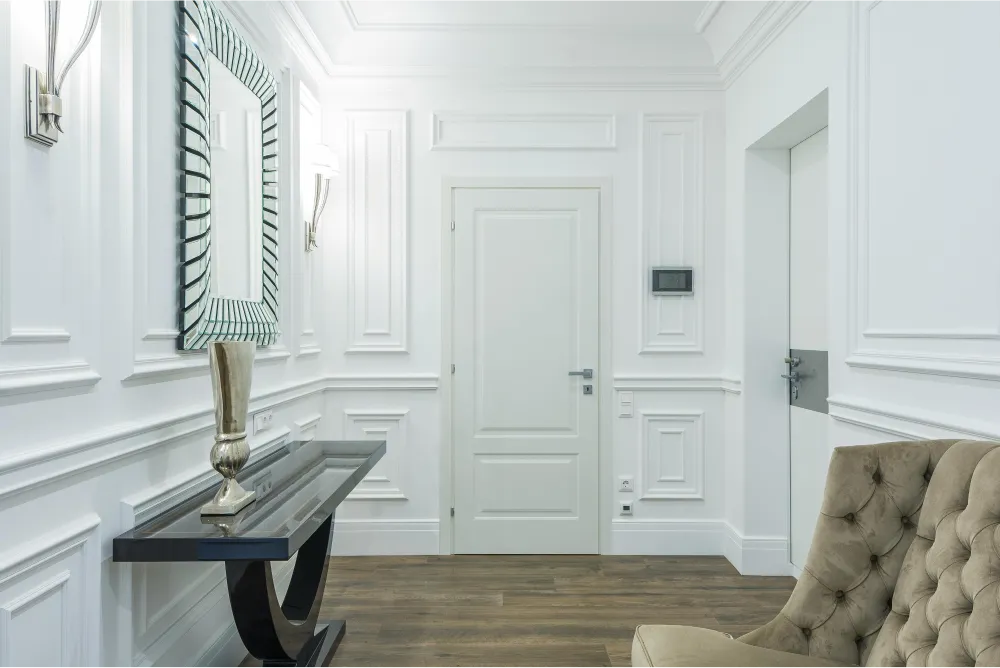
Image source: Pexels
- Two-tone wainscoting: Sometimes, two colors are better than one. Two-tone wainscoting is a striking and aesthetically pleasing interior design method that gives spaces depth and uniqueness. The upper wall is painted differently from the bottom to achieve a dynamic and distinctive impression.
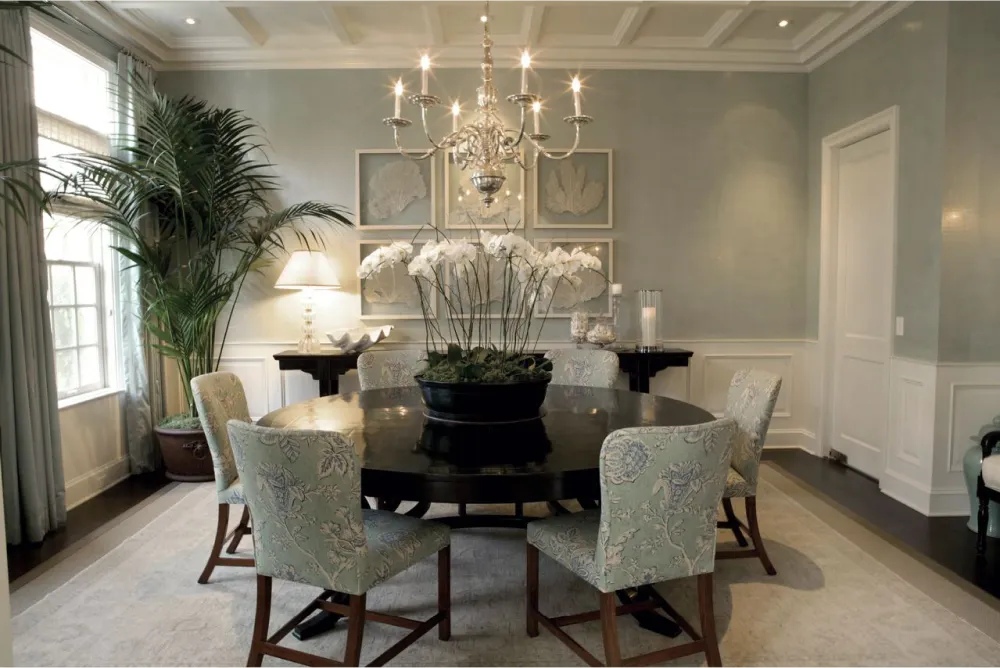
Image source: Wikimedia commons
- DIY: Faux wainscoting is a creative and affordable method to create visual interest in walls using trim pieces. It might not provide the same level of wall protection, but installation is simpler, and it’s a unique approach to improving your home’s appearance.
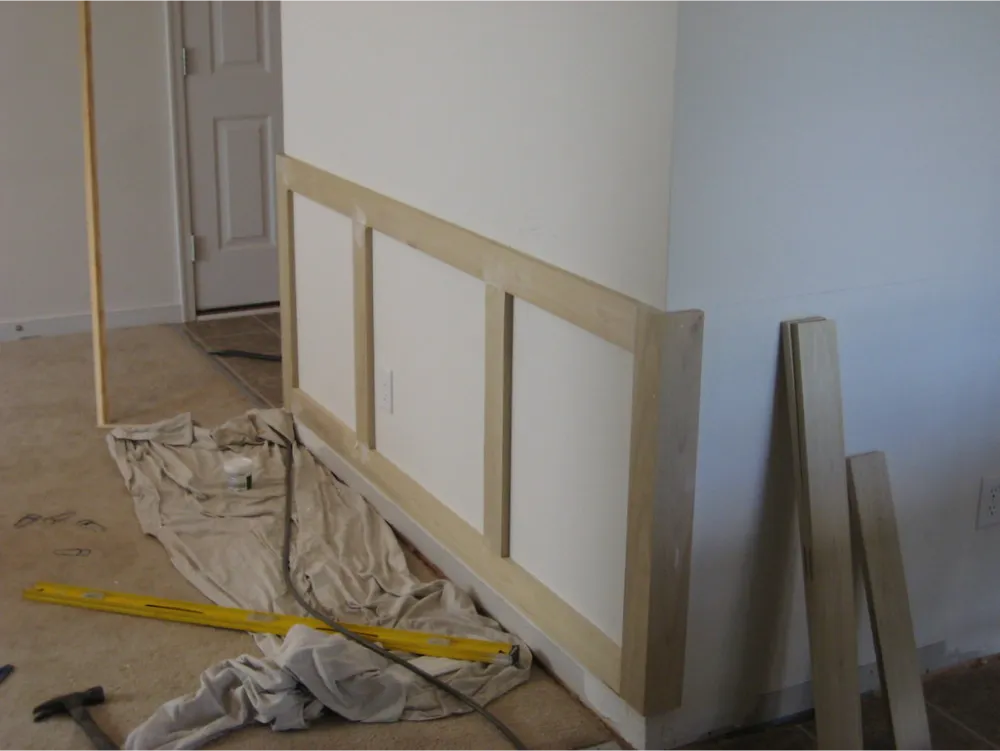
Image source: Flickr
- Reflections: Using mirrors can create a dilemma among wainscoting dos and don’ts. However, if used properly, mirrored wainscoting can offer a touch of elegance by combining refinement with utility. It offers both functionality and visual appeal by reflecting light to provide the impression of a larger space. The style is suitable for powder rooms and entryways.
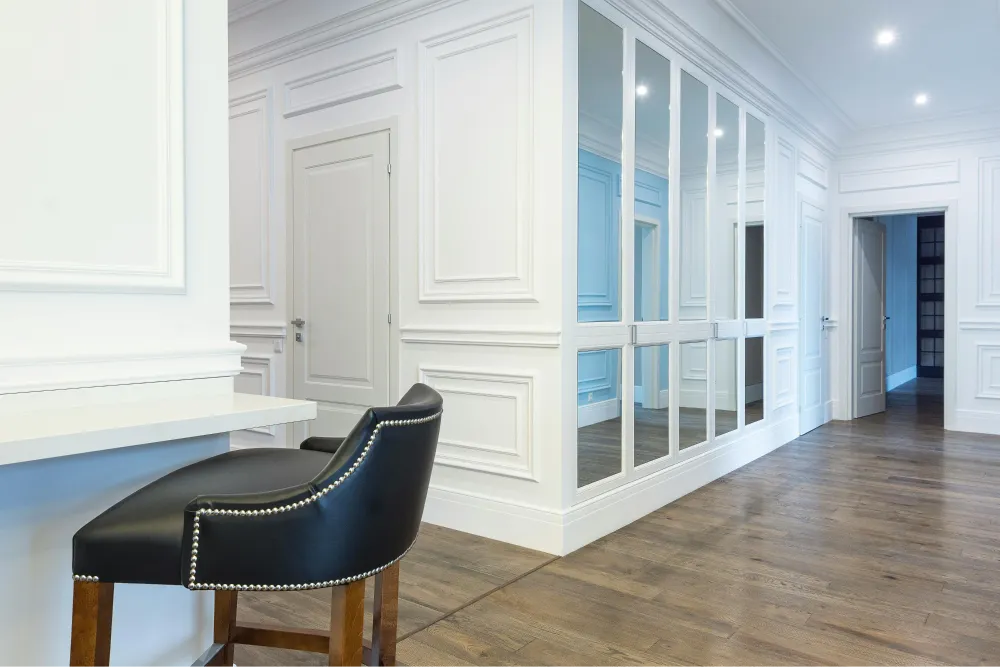
Image source: Pexels
- French style: French boiserie is a style that lends grandeur and historical beauty to any environment. It is perfect for sophisticated living and dining areas because it features detailed decorative details, finely carved woodwork, golden accents, and lavish embellishments.
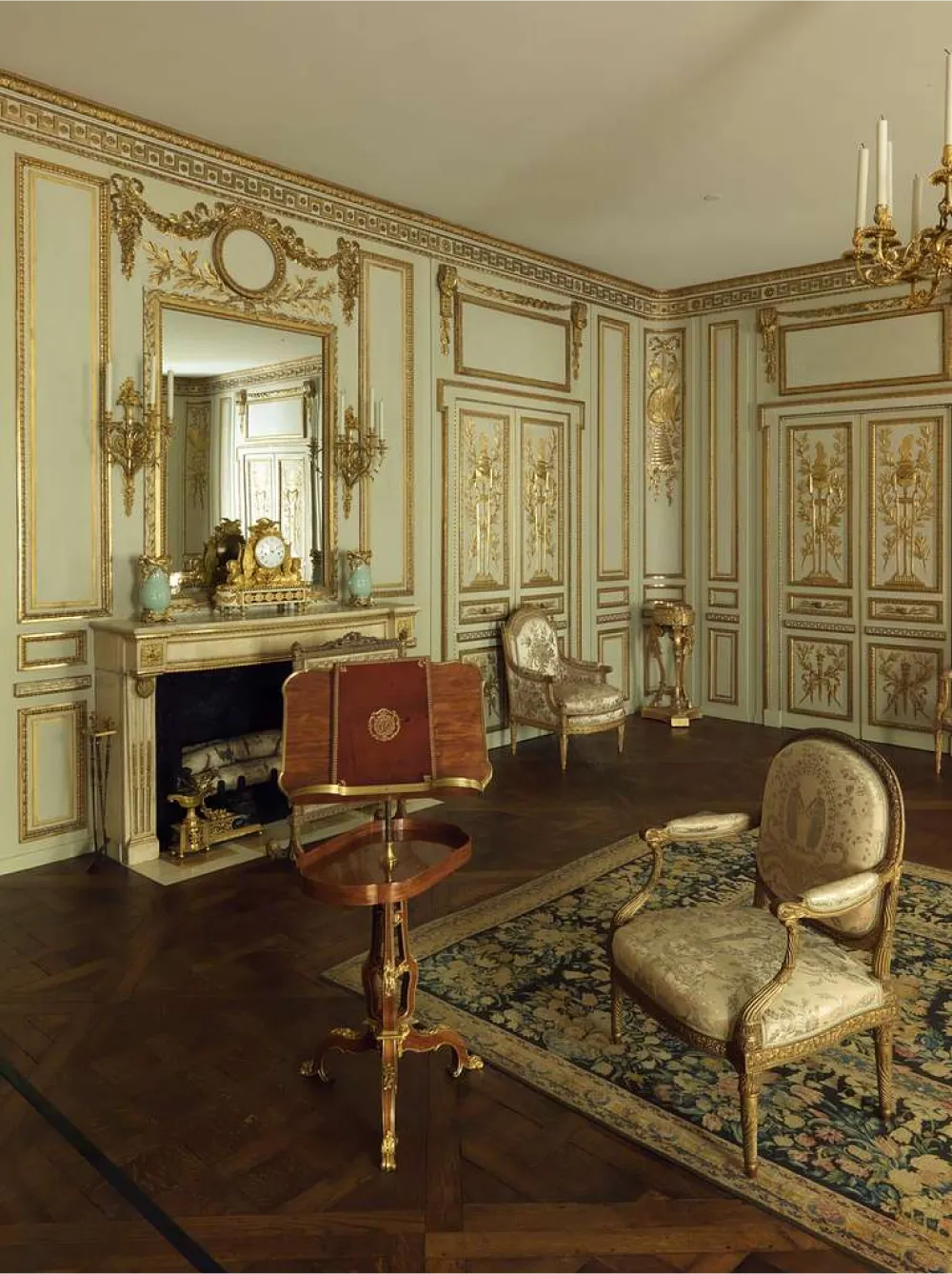
Image source: PICRYL
- Wood-finish wainscoting: Reclaimed wood wainscoting is a great alternative for eco-conscious homeowners who want a rustic design. It offers a feeling of history and weathered character.
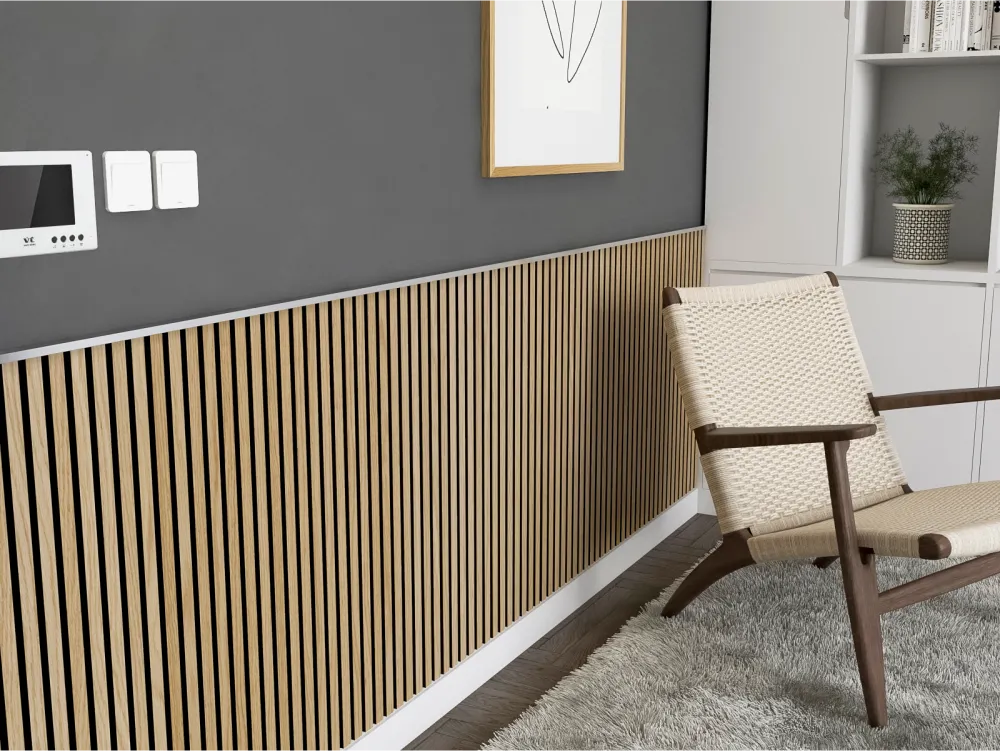
Image source: Flickr
- Full wall wainscoting: Full wall wainscoting is a style that extends from floor to ceiling. It’s popular for formal dining rooms and grand entryways, drawing attention and enhancing aesthetics.
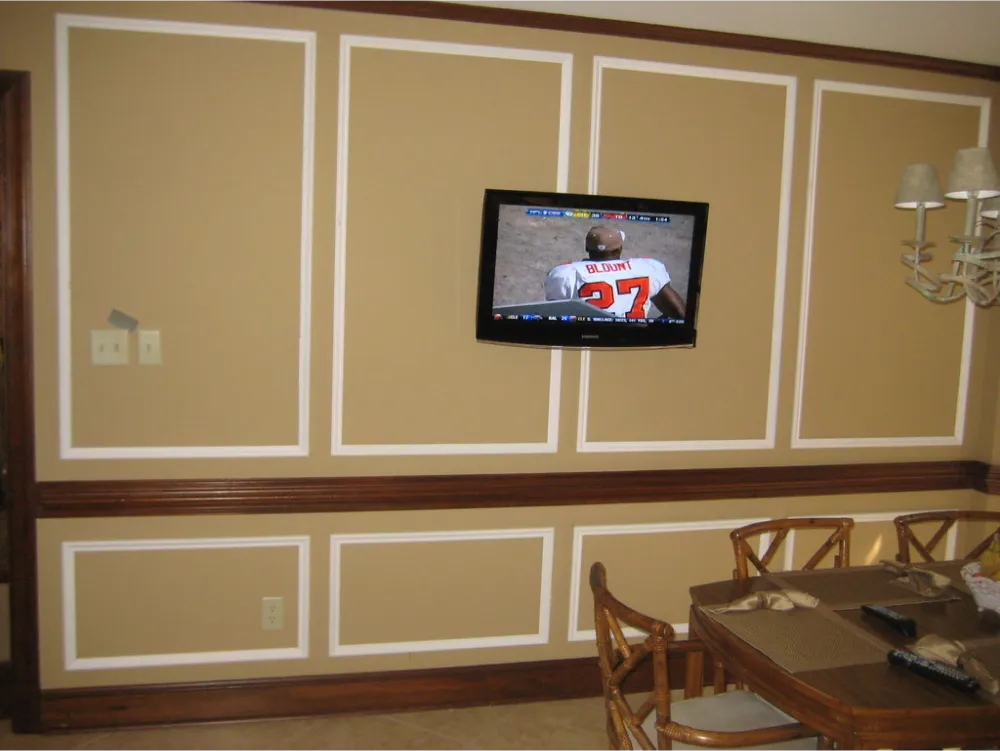
Image source: Flickr
Decorating Your Space with Woody Walls’ Panels
What is wainscoting? Wainscoting is a decorative architectural element that gives interior spaces elegance and refinement. This popular design blends modern and historical charm, making it suitable for various spaces, including the office, bedroom, kitchen, and guest bathroom.
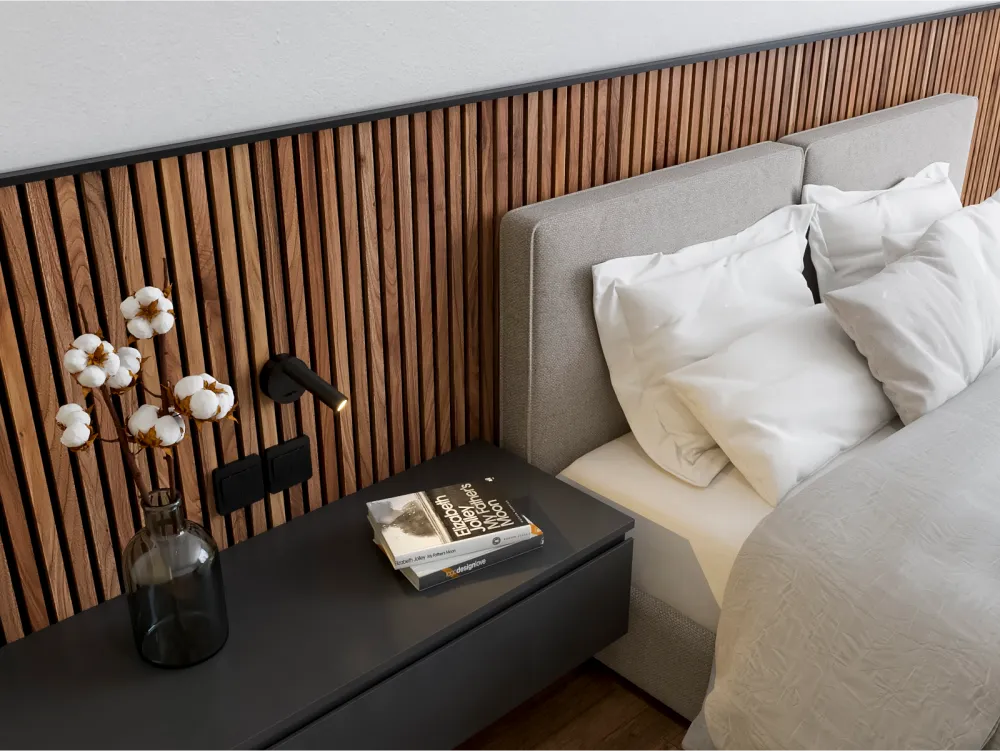
If you’re looking for more wood wall panel choices, visit Woody Walls. We offer the finest quality products to transform your wall and bring new life into your interior space.
Our 3D wall panels can enhance wood accent walls. Barnwood, Peel, and Stick wood plank collections offer rustic, refined, and nature-enhanced options. Meanwhile, Acoustic Slat Wall Panels provide improved acoustics, increasing privacy and serenity.
Hesitate no more; contact us right now!
FAQs
1. How high should wainscoting go?
The cap typically sits ⅓ of the way up the wall. For example, for 9-foot ceilings, you need 3-foot wainscoting. Cap it ⅔ the way up if your house features taller ceilings.
2. How wide should a wainscoting panel be?
Wainscoting panels should have the same widths. Thus, avoid cutting at doorways or corners to make them fit. The job requires computer-aided design software to determine panel widths for certain room dimensions to ensure consistency in panel fit.
3. How can you improve the look of the wainscoting panel?
Here are several ways you can do it:
- Paint on planks: Roll vertical stripes in alternating hues over the wall for a two-tone plank effect.
- Wall frames: Underneath it, install a chair and attach ornamental panel moldings with glue and nails. Apply the same paint color to anything below the chair rail.
- Fax flat panel: Glue and nail rails, stiles, and cap molding to smooth drywall or plaster. Paint the boards or wood a wall-matching color or an accent color.
- Stain-grade wall veneer: Install hardwood plywood straight to the wall, nail on the stiles and rails, and then top with cap molding to create a stain-grade wall veneer.

